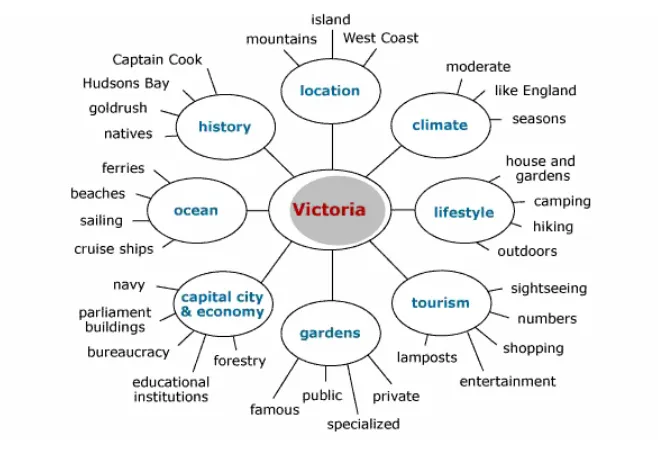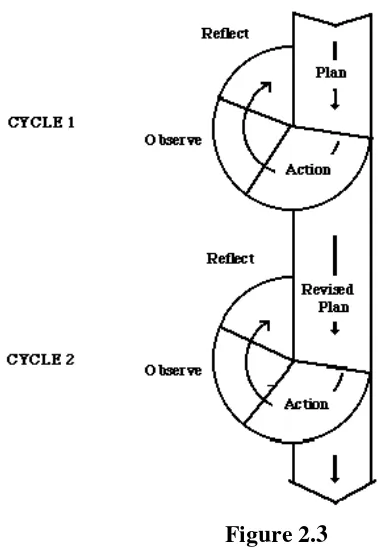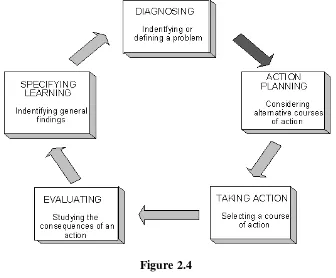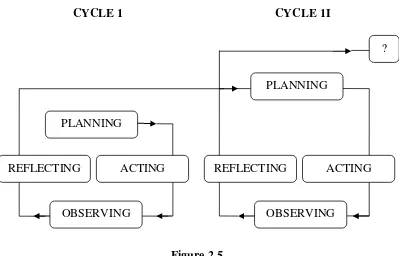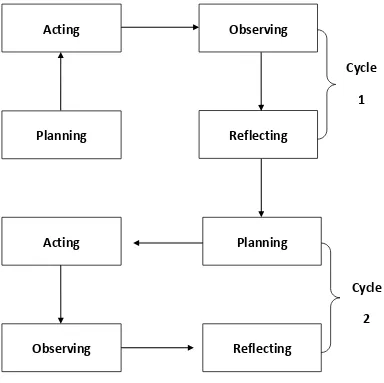Informasi Dokumen
- Penulis:
- Rega Giyang Girana Zetira
- Pengajar:
- Dr. Dwi Anggani Linggar Bharati, M.Pd.
- Intan Permata Hapsari, S.Pd., M.Pd.
- Prayudias Margawati, S.Pd., M.Hum.
- Sekolah: Semarang State University
- Mata Pelajaran: English
- Topik: Using Clustering Technique to Explore the Ideas in Writing Descriptive Text
- Tipe: Final Project
- Tahun: 2014/2015
- Kota: Semarang
Ringkasan Dokumen
I. INTRODUCTION
This section introduces the research topic, outlining the background, significance, and scope of the study. It emphasizes the importance of writing skills in English, particularly descriptive texts, and identifies the challenges faced by students in developing their writing abilities. The introduction sets the stage for exploring the clustering technique as a potential solution to enhance students' creativity and organization in writing.
1.1 Background of the Study
The background discusses the pivotal role of language and writing in communication. It highlights the difficulties students encounter in writing descriptive texts, particularly in organizing their ideas and imagination. The section critiques traditional teaching methods that focus on structure rather than creativity, advocating for innovative techniques like clustering to foster student engagement and improve writing skills.
1.2 Reasons for Choosing the Topic
This subsection elaborates on the rationale behind selecting the topic. It emphasizes the necessity of mastering writing skills and the potential of clustering techniques to provide new perspectives for teachers. The goal is to enhance students' abilities in writing descriptive texts, aligning with curriculum requirements.
1.3 Statements of the Problem
The problem statement articulates the key challenges faced by students in writing descriptive texts. It raises questions regarding the implementation of clustering techniques and their effectiveness in improving students' writing skills, thereby guiding the research focus.
1.4 Objectives of the Study
The objectives outline the goals of the research, including identifying students' challenges in writing, describing the implementation of the clustering technique, and assessing its impact on students' ability to generate ideas for descriptive texts.
1.5 Significance of the Study
This section underscores the study's significance, emphasizing its potential to assist students in overcoming writing challenges. It aims to contribute to pedagogical practices by demonstrating how clustering techniques can enhance students' writing abilities and engagement.
1.6 Definition of the Key Terms
Key terms such as 'clustering technique,' 'media,' 'writing,' and 'descriptive text' are defined to provide clarity and context for the study. These definitions establish a common understanding of the concepts discussed throughout the research.
1.7 Scope of the Study
The scope delineates the boundaries of the research, focusing specifically on the implementation of clustering techniques in teaching descriptive writing to tenth-grade students at State Senior High School 1 Pegandon.
1.8 Outline of the Report
This subsection provides a roadmap of the report, summarizing the structure of the study, including chapters on literature review, methods of investigation, results and interpretation, and conclusions.
II. REVIEW OF RELATED LITERATURE
This chapter reviews existing literature relevant to the study, analyzing previous research findings and theoretical frameworks that support the use of clustering techniques in writing instruction. It provides a comprehensive overview of the concepts related to writing, descriptive texts, and teaching methodologies.
2.1 Review of the Previous Studies
This section summarizes prior research on writing instruction, particularly focusing on methods like mind mapping and environmental media. It discusses the effectiveness of these techniques in enhancing students' descriptive writing skills and highlights the need for innovative approaches like clustering.
2.2 Review of Theoretical Background
The theoretical background explores foundational concepts of writing, including definitions, components, and the writing process. It emphasizes the complexity of writing as a skill that requires practice and understanding of various elements, including organization and grammar.
2.2.1 General Concept of Writing
Writing is defined as a significant cultural achievement that allows for the communication of ideas and information. The section discusses various definitions and perspectives on writing, emphasizing its role in expressing thoughts and emotions.
2.2.2 Components of Writing
This subsection identifies the essential components of writing, including organization, content, grammar, mechanics, and style. It underscores the importance of mastering these elements for effective writing.
2.2.3 The Process of Writing
The writing process is outlined as a series of steps, from prewriting to drafting, revising, and editing. This section stresses the importance of each stage in developing writing skills and producing quality texts.
2.2.4 The Problem of Writing
Challenges faced by both students and teachers in the writing process are discussed, including issues of proficiency and motivation. The section offers solutions for addressing these problems through structured writing instruction.
2.2.5 Teaching Writing in Senior High School
This subsection addresses the specific context of teaching writing in senior high school, emphasizing the need for effective strategies to prepare students for academic writing and communication.
2.3 General Concept of Descriptive Text
Descriptive text is defined as a genre that conveys characteristics of people, places, or things. The section outlines the purpose and features of descriptive writing, emphasizing its significance in language learning.
2.3.1 The Purpose of Descriptive Text
The purpose of descriptive text is to provide detailed descriptions that allow readers to visualize the subject. This section highlights the importance of clarity and vivid imagery in effective descriptive writing.
2.3.2 The Generic Structure and Language Features of Descriptive Text
This subsection explains the structural components of descriptive texts, including identification and description. It also discusses language features that enhance descriptiveness, such as the use of specific vocabulary and tense.
2.3.3 Kinds of Descriptive Text
The types of descriptive texts are categorized, including descriptions of people, places, and things. Each type is elaborated with examples and strategies for effective writing.
2.4 General Concept of Media
Media are defined as tools that facilitate learning. This section discusses the role of media in enhancing teaching and learning processes, particularly in writing instruction.
2.4.1 The Role of Using Media in Teaching and Learning Processes
The section outlines the various roles media play in education, including promoting motivation, enhancing understanding, and providing diverse teaching methods. It emphasizes the need for effective media use in writing instruction.
2.4.2 Types of Media
Different types of media are categorized, including still pictures, audio recordings, motion pictures, and more. This section highlights the importance of selecting appropriate media for effective teaching.
2.4.3 Clustering Technique
Clustering technique is introduced as a prewriting strategy that facilitates idea generation. The section explains how clustering can enhance creativity and organization in writing.
2.4.3.1 The Definition of Clustering Technique
Clustering is defined as a visual brainstorming technique that helps writers organize their thoughts. The section discusses its effectiveness in transforming broad subjects into manageable topics.
2.4.3.2 The Advantages of Clustering Technique
The advantages of using clustering techniques in writing instruction are outlined, including its simplicity and effectiveness in enhancing students' writing skills.
III. METHODS OF INVESTIGATION
This chapter outlines the research methodology employed in the study, detailing the research design, subjects, procedures, instruments, and data analysis methods used to investigate the effectiveness of clustering techniques in improving students' writing skills.
3.1 Research Design
The research design is described as an action research approach, focusing on iterative cycles of planning, acting, observing, and reflecting. This design is chosen to allow for continuous improvement in teaching practices and student outcomes.
3.2 Subject of the Study
This subsection identifies the subjects of the study as the tenth graders of class X IIS 3 at State Senior High School 1 Pegandon. It discusses the selection criteria and the context of the participants.
3.3 Research Procedures
The research procedures are detailed, including the steps taken in each cycle of the action research. It covers the implementation of pre-cycle and post-cycle tests, along with observations during the teaching process.
3.3.1 Pre-cycle Test
The pre-cycle test is explained as a baseline assessment to evaluate students' initial writing skills before the implementation of clustering techniques. This test serves as a reference point for measuring improvement.
3.3.2 Post-cycle Test
The post-cycle tests are described as assessments conducted after each cycle of intervention. These tests aim to measure the effectiveness of clustering techniques in enhancing students' descriptive writing skills.
3.3.2.1 Cycle 1
Cycle 1 details the initial implementation of the clustering technique, including activities and observations made during this phase. The focus is on students' engagement and the effectiveness of the technique.
3.3.2.2 Cycle 2
Cycle 2 builds on the findings from Cycle 1, incorporating adjustments based on observations. This section discusses the activities and outcomes of the second cycle of intervention.
3.4 Instrument of the Study
The instruments used for data collection are detailed, including observation sheets and tests. These tools are designed to gather both qualitative and quantitative data on students' writing abilities.
3.4.1 Observation Sheet
The observation sheet is described as a tool for recording students' behavioral changes and engagement during the writing activities. This qualitative data complements the quantitative test results.
3.4.2 Test
The tests administered throughout the research are outlined, detailing their purpose in assessing students' writing skills before and after the intervention.
3.5 Method of Data Analysis
This section explains the methods used for analyzing the collected data, including scoring methods and techniques for interpreting the results of the writing tests.
3.5.1 Method of Scoring
The scoring criteria for evaluating students' writing are outlined, emphasizing the importance of consistent and objective assessment to measure improvement.
3.5.2 Method of Analyzing of Exploration of Ideas
This subsection discusses the approach used to analyze students' ability to explore ideas through clustering, focusing on the depth and creativity of their writing.
3.5.3 Level of Achievement
The criteria for determining students' levels of achievement in writing are explained, providing a framework for evaluating progress over the course of the study.
3.5.4 Technique of Data Analysis
The techniques employed to analyze both qualitative and quantitative data are discussed, ensuring a comprehensive understanding of the research outcomes.
IV. RESULT AND INTERPRETATION
This chapter presents the findings of the research, detailing the results of the intervention and interpreting the data to assess the impact of clustering techniques on students' writing skills. The analysis focuses on behavioral changes, idea exploration, and overall writing improvement.
4.1 The Result of Using Clustering Technique to Explore the Ideas
The results of implementing the clustering technique are presented, highlighting improvements in students' ability to generate and organize ideas for descriptive writing.
4.1.1 The Result of the Students’ Behavioural Changes in the Teaching and Learning Process
This subsection discusses the observed changes in students' behavior and engagement during the writing process, indicating increased enthusiasm and participation.
4.1.1.1 Cycle 1
The outcomes of Cycle 1 are analyzed, focusing on students' initial responses to the clustering technique and any challenges faced during implementation.
4.1.1.2 Cycle 2
Cycle 2 results are examined, showcasing improvements in student engagement and writing quality based on adjustments made from Cycle 1.
4.2 The Result of the Students’ Explore the Ideas
This section presents the findings related to students' ability to explore and develop their ideas through clustering techniques, emphasizing creativity and depth in their writing.
4.2.1 Post-cycle Test 1
Results from the first post-cycle test are analyzed, providing insights into students' progress and areas for further improvement.
4.2.2 Post-cycle Test 2
The outcomes of the second post-cycle test are discussed, highlighting continued improvements in students' writing skills and idea exploration.
4.3 The Students’ Test Result
This subsection summarizes the overall test results, comparing pre-cycle and post-cycle performance to evaluate the effectiveness of the intervention.
4.3.1 Pre-cycle Test
The results of the pre-cycle test are presented, establishing a baseline for assessing student improvement.
4.3.2 Post-cycle Test
The post-cycle test results are analyzed, demonstrating the impact of the clustering technique on students' writing abilities.
4.3.2.1 Cycle 1
Cycle 1 post-test results are detailed, showcasing students' initial improvements in writing after the first intervention.
4.3.2.2 Cycle 2
Cycle 2 post-test results are examined, reflecting the cumulative effects of the clustering technique on students' writing skills.
4.4 The Interpretation of the Data
This section interprets the data collected throughout the study, drawing conclusions about the effectiveness of clustering techniques in enhancing students' writing skills.
4.4.1 Students’ Improvement in Explore the Ideas
The analysis focuses on how students' ability to explore ideas has improved as a result of the clustering technique, emphasizing the depth and creativity of their writing.
4.4.2 Students’ Improvement in Writing
This subsection discusses overall improvements in students' writing skills, as evidenced by test scores and qualitative observations during the research.
V. CONCLUSIONS AND SUGGESTIONS
The final chapter summarizes the key findings of the research, drawing conclusions about the effectiveness of clustering techniques in improving students' writing skills. It also offers suggestions for future research and practical applications in educational settings.
5.1 Conclusions
The conclusions drawn from the research emphasize the positive impact of clustering techniques on students' ability to explore ideas and enhance their descriptive writing skills. The study highlights the importance of innovative teaching methods in fostering student engagement and creativity.
5.2 Suggestions
This subsection provides recommendations for educators on implementing clustering techniques in writing instruction. It also suggests areas for further research to explore the long-term effects of such techniques on student writing development.

